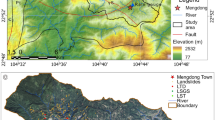Abstract
Many karst depressions with diameters of 300 m to 500 m, suitable for constructing Arecibo-style radio telescopes, were identified in the south of Guizhou Province by Remote Sensing (RS) and Geographic Information System (GIS) technologies together with field investigations. Fundamental topography and landform databases were established for 391candidate depressions, and using GIS the3-dimensional images of depressions, at a scale of 1:10000, were then simulated to fit a spherical antenna.
Similar content being viewed by others
References
Peng, B. and Nan, R.: 1997, Kilometer-square Area Radio Synthesis Telescope KARST Project, IAU Symposium 179, 93–94.
Peng, B., Nan, R., Qiu, Y., Nie, Y. et al.: 1996, Further site survey for the next generation large radio telescope in Guizhou, in: N. Jackson and R.J. Davis (eds.), High-Sensitivity Radio Astronomy, Cambridge Uni. Press, pp. 278–281.
Peng, B., Nan, R., Su, Y.: 2000, Proposed world's largest single dish, FAST, SPIE, 4015, 45.
Chen, X. et al.: 1998, Digital Environment Model Study Based on GIS, J. Rem. Sens. 2(4), 305–309.
Author information
Authors and Affiliations
Rights and permissions
About this article
Cite this article
Zhu, B., Nie, Y., Nan, R. et al. The FAST/SKA site selection in Guizhou province. Astrophysics and Space Science 278, 213–218 (2001). https://doi.org/10.1023/A:1013175200013
Issue Date:
DOI: https://doi.org/10.1023/A:1013175200013




